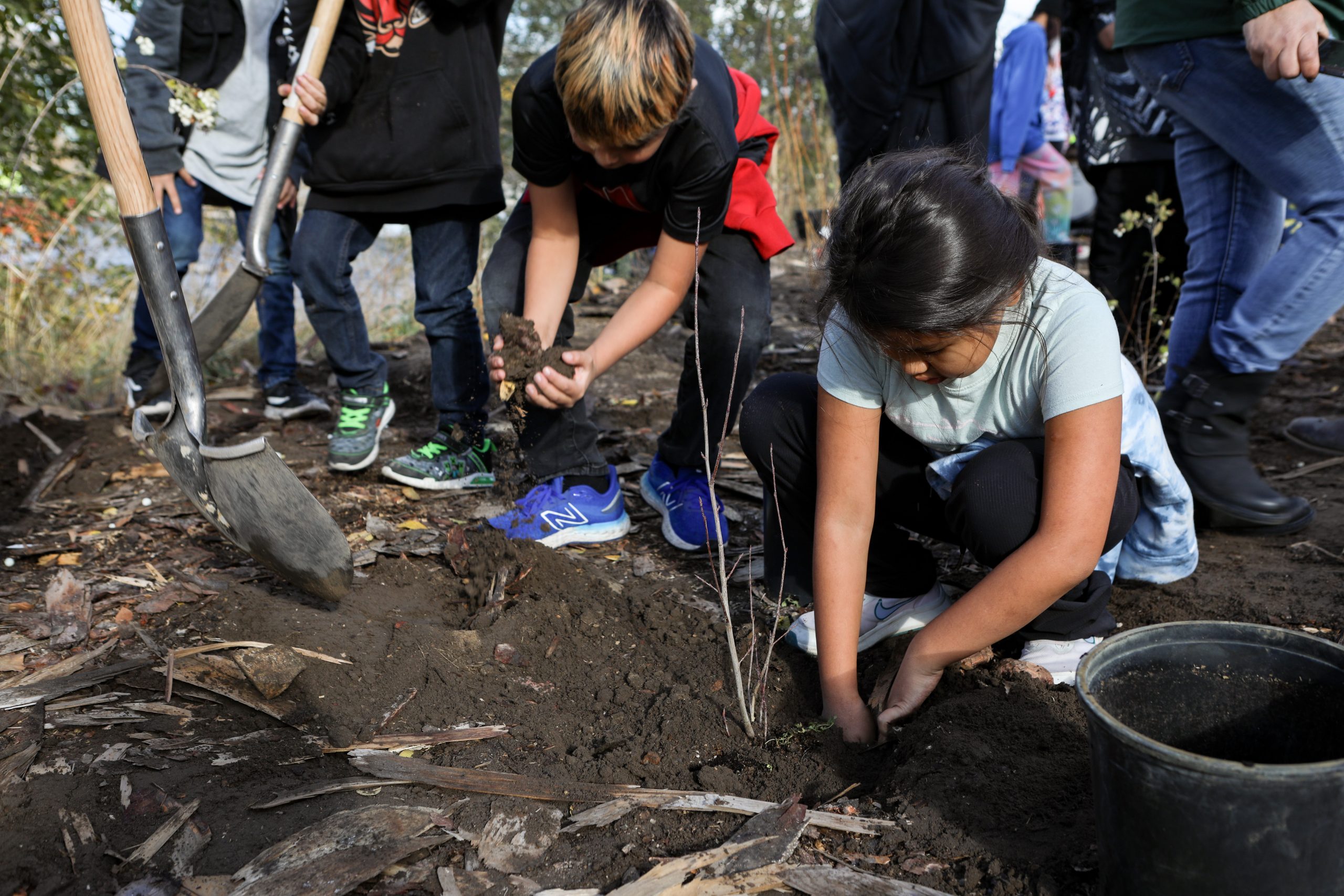Finding strength for the children: Walkathon and ceremony honours 215+
Amid ‘Canada Day’ celebrations, a Kwakwaka’wakw athlete and his family led a 74 km journey to ‘Victoria,’ mourning those who have been lost
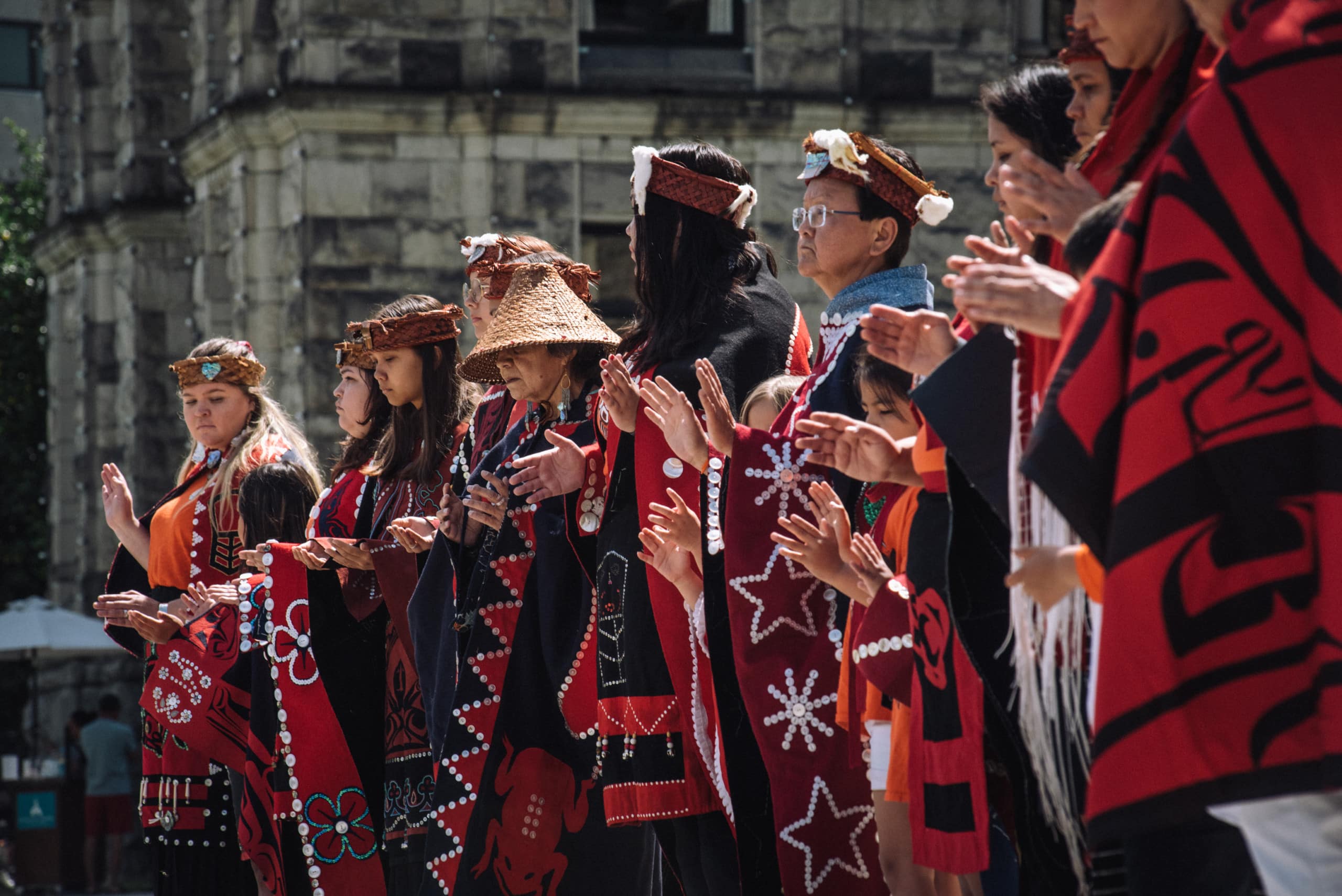
Content Warning: This story contains details about residential “schools” and lives that were lost within the institutions, as well as other discussions of colonial trauma. Please read with care.
In the afternoon heat of July 1, intergenerational survivors embarked on a 21.5-hour walk to remember and advocate for all the children lost to the lethal institutions known as residential “schools.”
The overnight journey from T’Sou-ke homelands (“Sooke”) to lək̓ʷəŋən homelands (“Victoria”) was organized by Kwakwaka’wakw athlete Sasha Perron, who also wanted to honour survivors and their families.
Perron walked the entire 74-kilometre distance with three others, including his older sister Jamie Gentry. Around 20 people joined at various points to support and participate in shorter sections of the walk.
“There are more and more unmarked graves being found, and less and less people talking about it,” said Perron, who is from Da’naxda’xw First Nation. “We’re speaking in action form and bringing to light the children who didn’t make it home.”
The overnight walk culminated on July 2 at the “B.C.” legislature, where a memorial ceremony was held for all of the Indigenous children whose lives were lost after being taken from their homes and put into church- and state-run assimilation institutions. While they are commonly known as “schools,” many reject that terminology.
“I refuse to call them schools — they were institutions,” said Kwakwaka’wakw artist Lou-ann Neel, who led the ceremony and who is also Perron’s aunt.
Being a survivor, Neel knows firsthand that separating children from their parents, families and communities has a lifelong impact.
“They would tell us things like, ‘You were sent here because your family doesn’t love you and they don’t want you,’” she said. “What I knew in my heart and what I was hearing with my ears were two different things.”

Beyond the emotional abuse, many survivors recall habitual experiences of physical and sexual violence and many children died while in the institutions.
The duration of the walk — 21.5 hours — paid tribute to the 215 children whose remains were detected at the former Kamloops Indian Residential School during a preliminary search using ground-penetrating radar. Tk’emlúps te Secwépemc confirmed the finding in May 2021.
“That was a pretty big day for Canada and for our communities in general,” said Perron. “That’s what got me started on this new path of raising awareness and trying…to support my family who went to residential school.”
Since then, evidence of hundreds more unmarked graves have been detected at sites across the country, in the ongoing work to find closure and expose the truth of Canada’s genocidal legacy. The Truth and Reconciliation Commission Memorial Register’s ongoing count confirms more than 4,000 children died at the schools.
Last summer, after the initial announcement in “Kamloops,” Perron ran one kilometre for each of the 215 children, as well as an additional kilometre for those yet to be found. Perron has used both the run and this year’s walkathon to raise money for the Indian Residential School Survivors Society. The two fundraisers together have raised more than $24,000.
The work is spiritual as well, he said. “Every step represents a prayer for loved ones.”
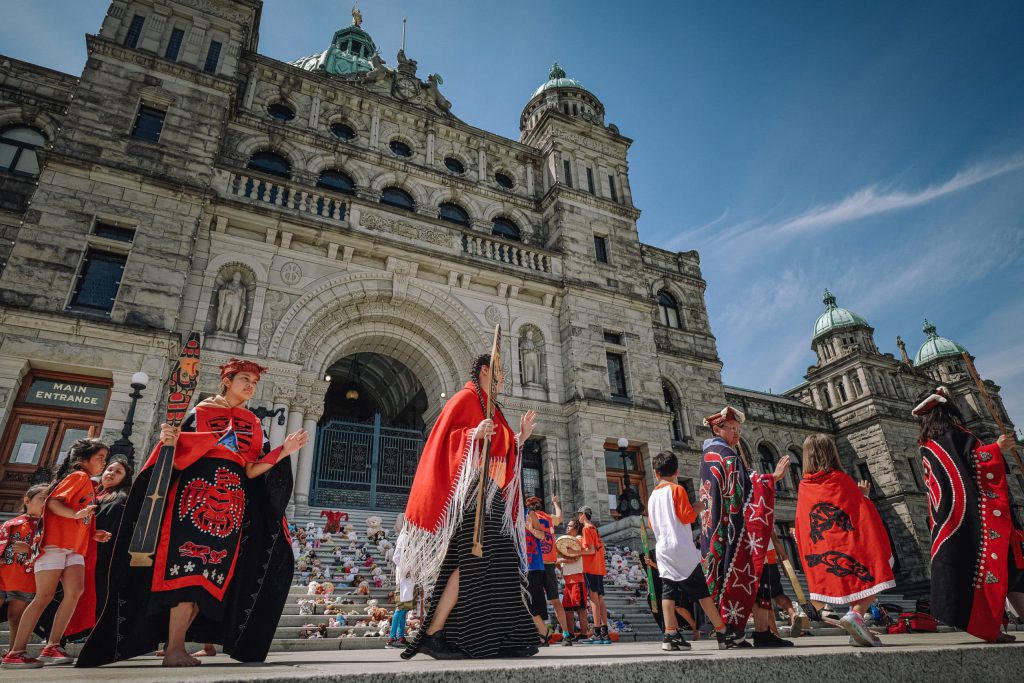
Perron and his sisters are the first in their family in generations to not be forcibly enrolled into a residential “school.” He recognizes the trauma that his relatives continue to work through, and said the walkathon was an attempt “for us, as the younger generation, to be able to take some of that burden.”
Neel, who was also part of the support team that brought the walkers food and water during the journey, said it brings her a lot of relief knowing that the youth are stepping up to carry the torch.
“Seeing our young people do this has just been a real blessing,” she said. “I’m so thankful.”
Neel has advocated for residential school survivors for more than 30 years, helping to found one of the first survivor support groups back in 1990.
“It’s very painful and it’s very exhausting to do this work,” she said. “People weren’t even talking about this out loud back then.”
Although the amount of awareness has come a long way, Neel said she still comes across denialists who refuse to believe the horrific realities of the institutions continuing to impact countless Indigenous families.
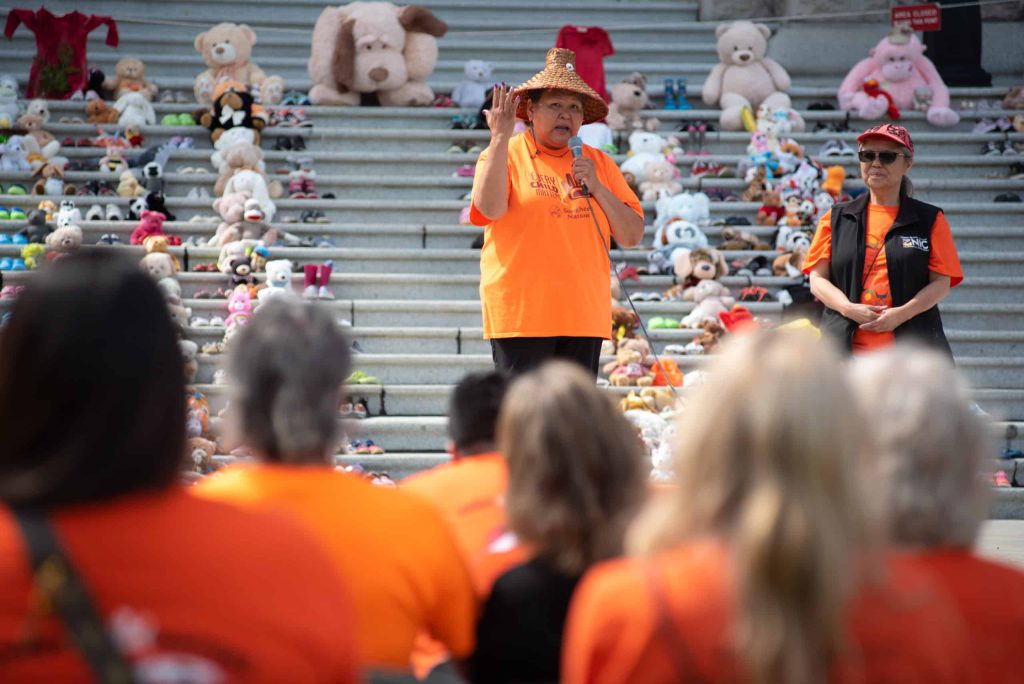
Perron said part of the reason that the walk and ceremony coincided with “Canada Day” celebrations was “to remind everybody that…people are still mourning.”
“We’re still locating unmarked graves all across Canada,” he said. “It’s not a one-off thing that people can just forget about.”
‘A feeling of coming home’
For Jamie Gentry, Perron’s sister, the walkathon and ceremony also helped her work through the “heavy emotions” that arise during this time of year when the inescapable noise and red-and-white flags overtake “Victoria,” in celebration of a country built on the genocide and cultural dislocation of her people.
Gentry and Perron’s grandmother was alive during Canada’s Potlatch Ban — another brutal arm of the Indian Act which criminalized Indigenous ceremony, governance, and cultural practices from 1885 to 1951.
“This was a way to transform that anger and frustration into something really meaningful and beautiful,” Gentry said.
At the memorial ceremony following the walkathon, Kwakwaka’wakw dancers dressed in regalia danced to songs in Kwak̓wala passed down by their ancestors.
“It’s just incredible that our ancestors were able to keep so much alive,” Gentry said, adding that they “risked so much” to do so.
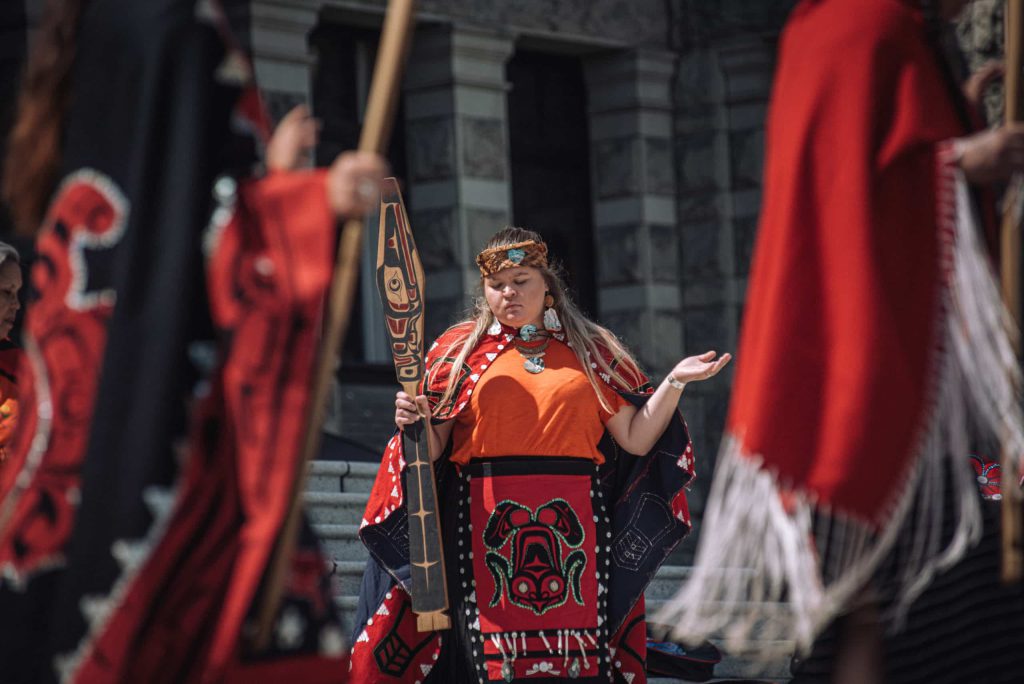
Gentry and Perron’s grandmother grew up on ‘Mimkwa̱mlis (Village Island), the same island where, in 1921, Kwakwaka’wakw Chief Dan Cranmer hosted one of the largest potlatches to ever occur on the coast. Federal authorities got word of the underground potlatch and arrested 45 people for practicing their Kwakwaka’wakw songs and dances. 750 potlatch items were also confiscated and sent off to museums.
“[The] government very deliberately tried to destroy our cultural ways,” said Neel, adding that the act of revitalizing those ways in the present day can simultaneously open the doors to healing.
“One of the things that has always held true is that it’s our culture that helps us to heal,” she said.
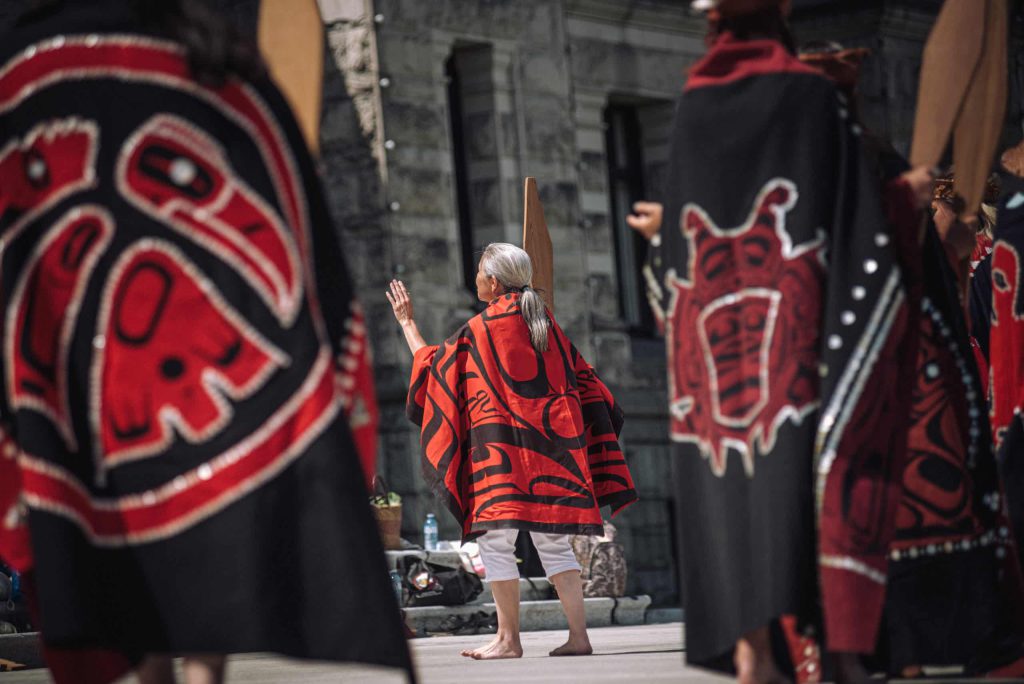
Gentry said that seeing her aunt Neel and other relatives dancing at the memorial ceremony gave her “a feeling of coming home.”
It was a familiar feeling for Gentry, whose shyness and shame she felt as an Indigenous child in a colonial world would dissipate when entering the big house for potlatches and ceremony.
“It woke up the spirit inside me,” she said. “I had so much love and so much pride for my culture. [The Big House] was where I felt like I could be myself and I was accepted.”
The Big House is also a place where names are passed down. During the memorial ceremony at the “B.C.” Legislature, Kwakwaka’wakw Chief Maxwxwadziy announced that Perron would be given a new name — Qix sis sa las — at an upcoming potlatch in September.
“It means, many people walking to his potlatch — a rather fitting name,” said Kwakwaka’wakw singer Matthew Ambers, who then led a song to mark the acknowledgement.
“It’s an honour for me to be able to carry that name,” said Perron. “It lays the path for my future work and…gives me the strength to continue the work that I’m doing right now.”
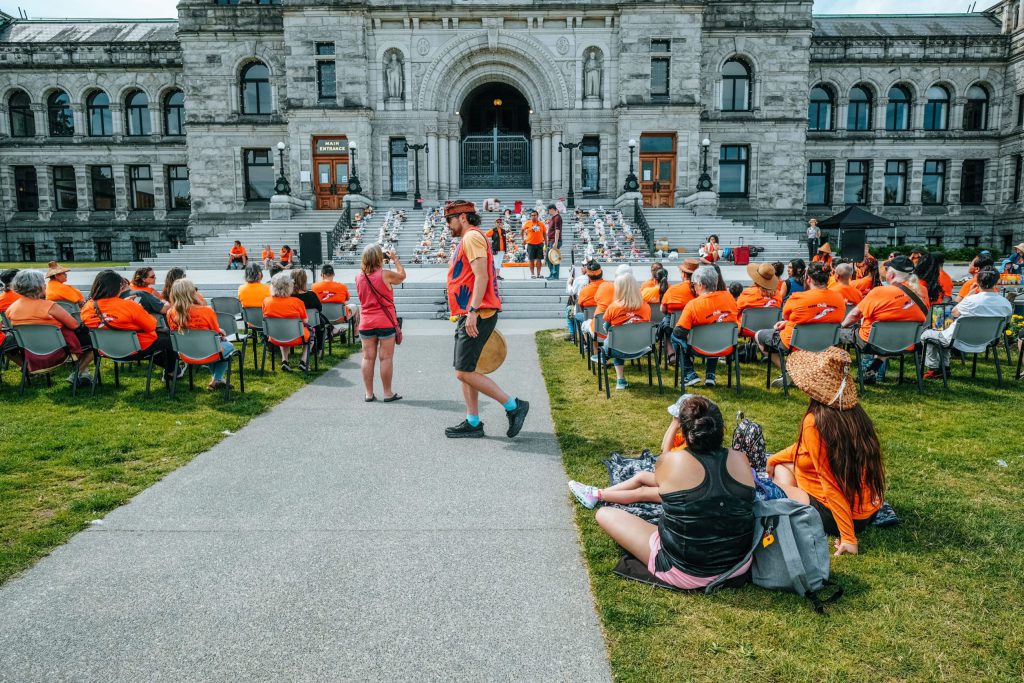
While the new name will become a source of strength for Perron, other walkathon participants spoke about the importance of finding their own points of strength to continue this work as well.
At one of the walk’s last rest stops, wondering if she could continue to the end, Gentry looked around at the 21.5 candles that had been lit at the break of dawn by their support crew.
“The sun was rising…and my body hurt so much,” she said. “I thought of all the children that would have been in residential school, and the excruciating physical and emotional pain — and spiritual pain — that they would have had to go through daily.”
Gentry said that at that moment it was the strength of those children that kept her going.
“If those babies could endure that, then I can endure this.”
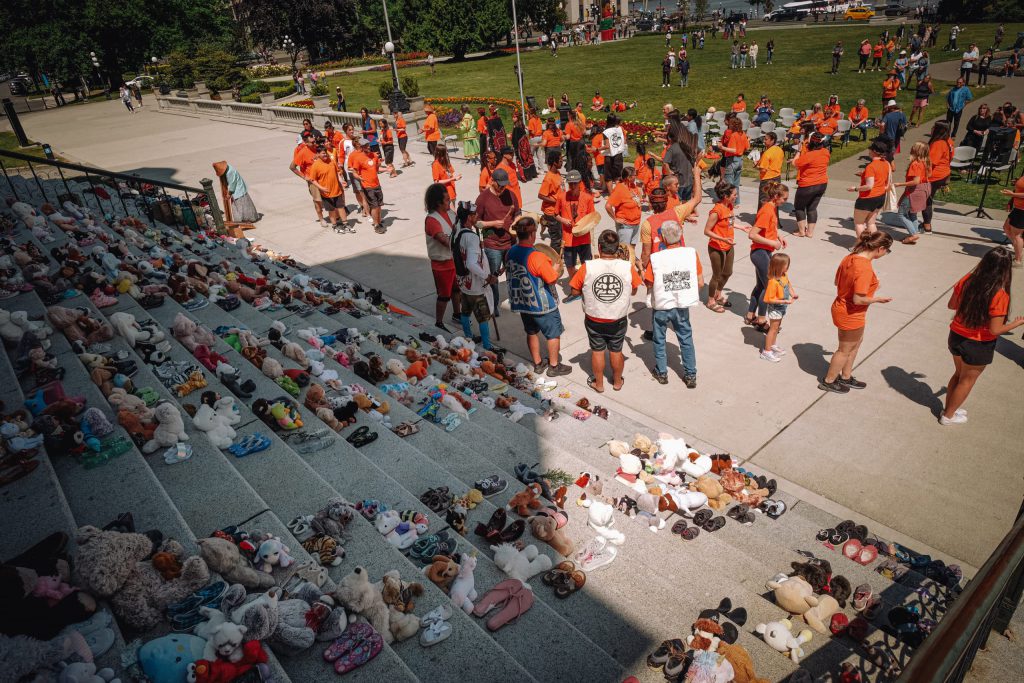
The Indian Residential School Survivors Society’s 24-hour Crisis Line can be accessed at 1-800-721-0066.
Author
Latest Stories
-
‘Bring her home’: How Buffalo Woman was identified as Ashlee Shingoose
The Anishininew mother as been missing since 2022 — now, her family is one step closer to bringing her home as the Province of Manitoba vows to search for her
-
Amid climate impacts, leading Secwépemc firekeeper shares ‘a better way of looking after the land’
In a time of worsening wildfires, Joe Gilchrist says cultural burning ‘needs to be multiplied hundreds of times’ — returning to Indigenous stewardship




